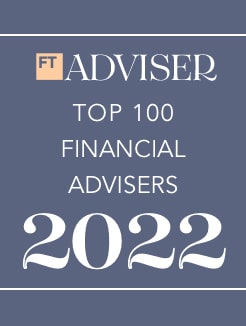World markets continue to face a number of challenges, with market volatility a prevalent feature of 2022 so far. Charlie Buxton, our Head of Investment Management, takes a look at what investors need to consider.
The first four months of this year have proved anything but straightforward for investors – a combination of Central Banks’ U-turn on inflation, Russia’s invasion of Ukraine and a doubling down on China’s zero-Covid policy all converging at once.
A clear example of the varied nature of volatility in markets played out following the recent Federal Reserve meeting. Initially, market response was positive and supportive, but this quickly evaporated. The very next day market corrections acknowledged the many risks still at play – not to mention a potentially new normal in monetary policy.
Despite this, common sense appears to be returning to Central Bank policymaking. Having offered no convincing reasons as to why asset buying programmes have carried on long after the 2007-09 financial crisis, Central Banks now seem to be focused on raising interest rates and shrinking their balance sheets. After too long with inflated asset prices and mispricing of risk, it should become easier to believe that market prices hold some meaning.
A sense of normality?
The most significant sign of normality returning is seen by looking at the number of negative yielding bonds globally; they’ve fallen from 4,500 last year to around 100 today. It’s clear that the risky practice of paying people to borrow has passed, and the desire to pursue returns whatever the risk is less attractive. There are signs of more sense coming into markets – benchmark 10-year US Treasuries are delivering a yield of over 3 percent per annum, more than twice late November levels. The challenge for investors has been that equity and bond prices have fallen together since the start of the year, and that has offered investors limited levels of diversification.
It remains to be seen whether this heralds the end of a period of ultra-loose monetary policy, which has seen Central Banks continually provide safety nets for falling markets, whilst failing to curb enthusiasm for returns. With a short-term view it’s likely that the answer is yes, at least in the US, Bill Dudley, former head of the New York Federal Reserve, has noted that the US Central Bank is all for a weaker stock market and higher bond yields.
Continuing concerns
Still, the risk of a policy misjudgement is also high because, as Chair of the Fed Jay Powell admitted, a neutral monetary policy position which neither speeds up nor slows the economy was “not something we can identify with any precision”. The Fed remains confident it can achieve a soft landing but if so, it could require both luck and judgment.
In early May 2022, the Bank of England raised interest rates by a quarter-point to 1 per cent, the highest level for more than a decade. Members of the Bank’s Monetary Policy Committee are clearly prepared to intensify the squeeze on household incomes to address worsening inflation, as it warned that higher energy prices are set to push inflation above 10 per cent.
China’s zero-Covid policy and lockdowns are also damaging demand, with collapses in the property sector and a disproportionately large part of the Chinese economy also biting. This is bad news for, amongst others, exporters in continental European who are also dealing with the loss of the Russian market.
Positioning investment portfolios
Our investment portfolios were positioned for higher rates of inflation just over a year ago, and the short-dated nature of fixed income holdings reflects that. Since October last year, we’ve also added to assets that might be classified as “Alternative”. These could be real assets, tied to physical assets whose returns might be more able to keep pace with inflation; or carefully selected absolute return funds whose overall performance tends to be less correlated with other asset classes. It’s our view, as we’ve said before, that whilst the current picture remains unfavourable to equities and bonds, staying invested over the longer term has proven its worth time and time again. We also believe that our value styled tilt will benefit investors in the long run.
There is no doubt that after years of supportive monetary policy, together with the fiscal support provided post pandemic – we’re now entering a significantly more challenging time for markets. However, as market gyrations following the latest Federal Reserve meeting show, no one can predict how markets will react; it’s better instead to build a strategically orientated portfolio, blended with assets which may endure over the longer term.
To discuss any aspects of your own portfolio, please get in touch with your dedicated Financial Planner at The Fry Group or contact us.




